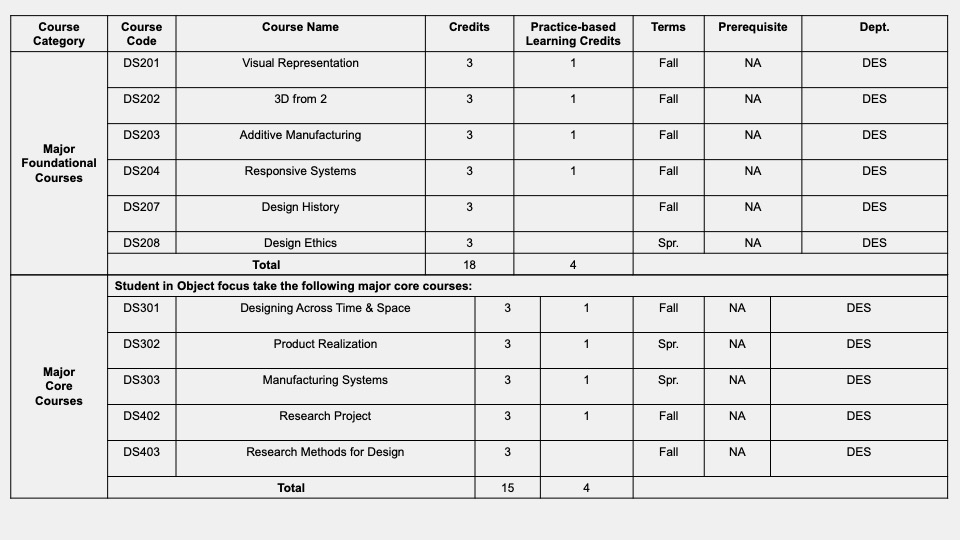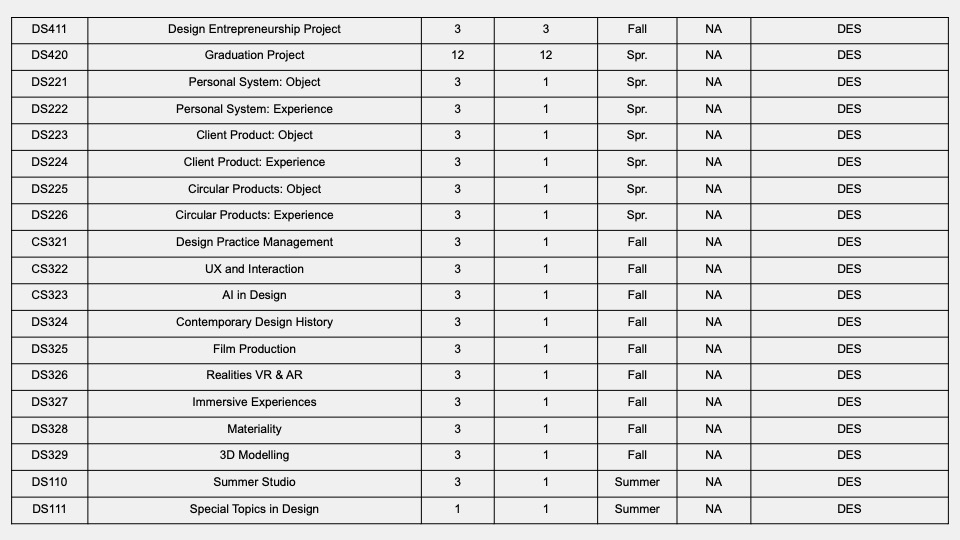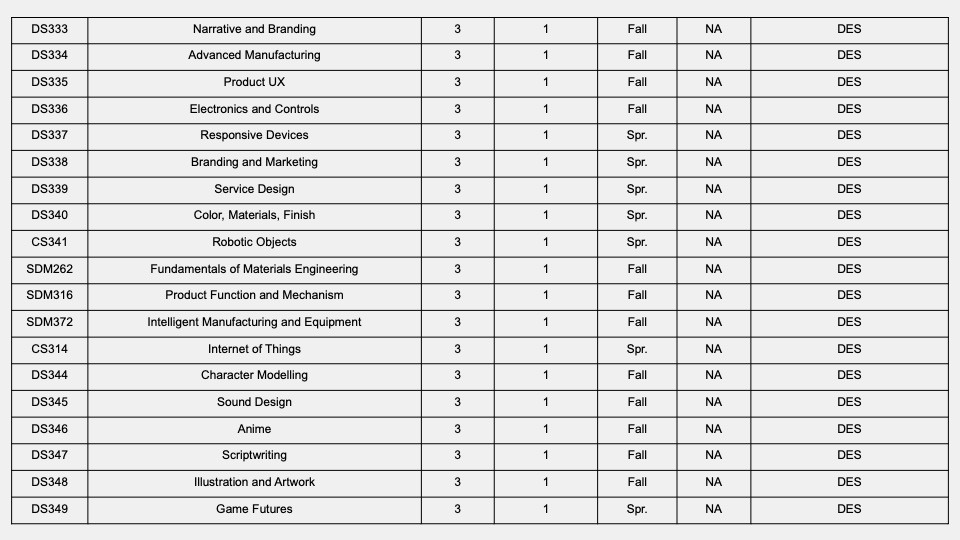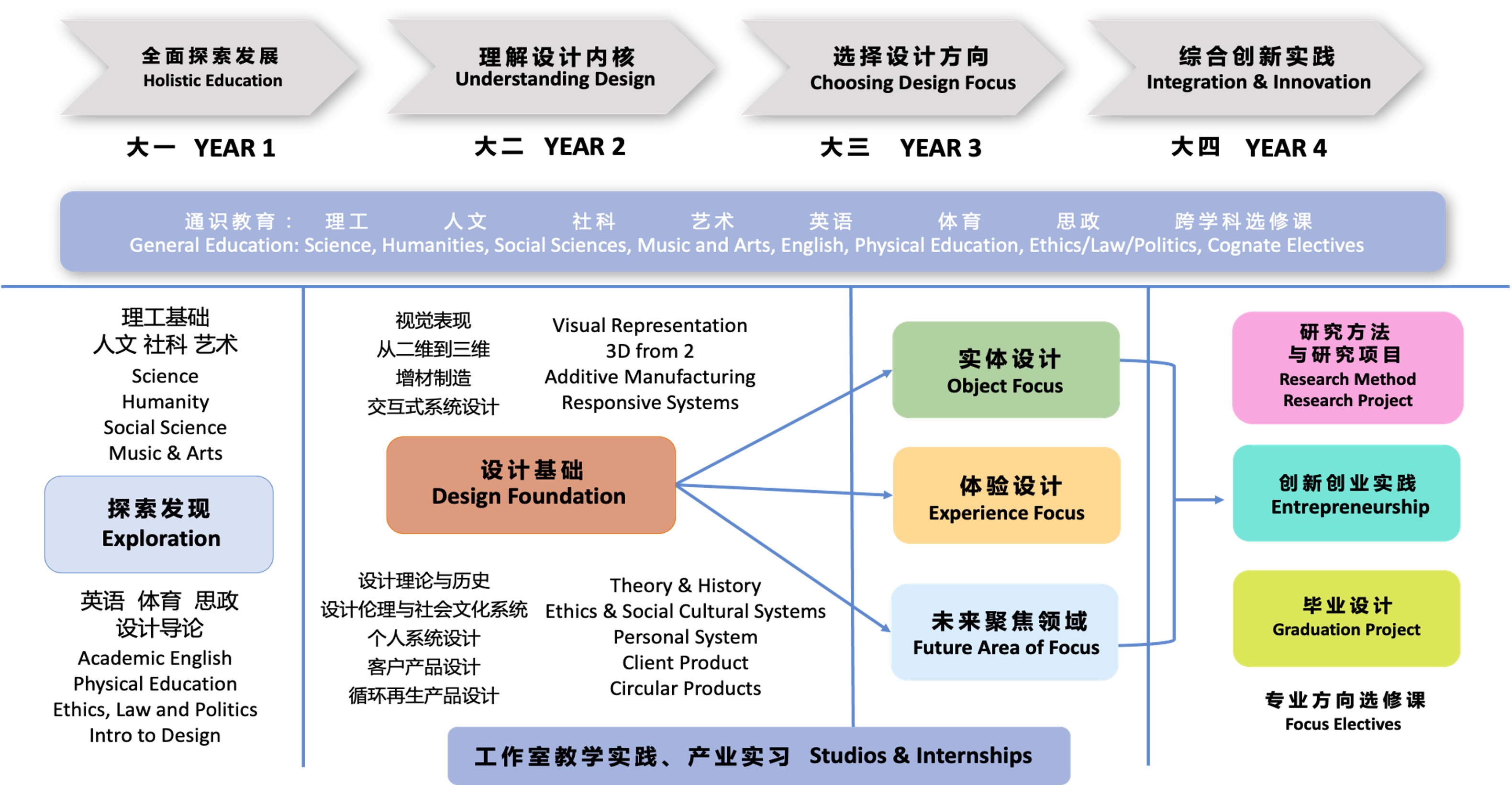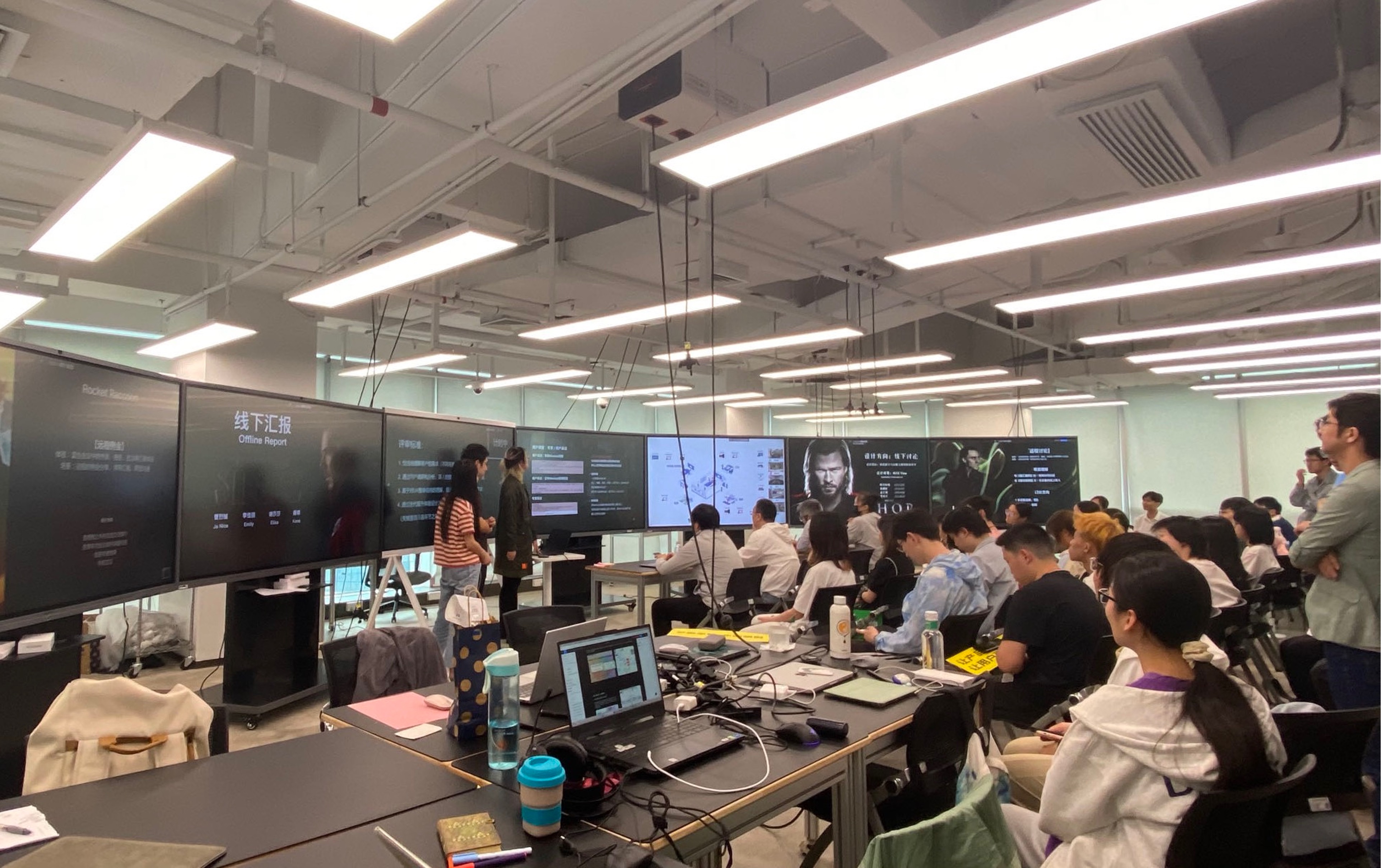
SUSTech School of Design aims to build a global creative community in which learning, research, and engagement are all part of the creative experience, to educate students in the enormous potentials and responsibilities of design, and to translate leading technologies into new design outcomes and industry advancement for social benefit.
SUSTech School of Design offers rigorous project-based teaching programs led by a team of leading designers, and scholars. Teaching programs will focus initially on object design, and experience design. These areas of focus are aligned and framed to bridge basic research to industrial needs, leading to careers in gaming, product design, animation, branding, graphics and so on. Cross-disciplinary activities are implemented, including internships, research projects, entrepreneurial projects, and graduation project. Close links with industry leaders and creative makers enhance learning and research. The curriculum structure of the School will allow future addition of areas such as interaction, environmental and wearables design.
Academic subject areas: Mechanical Engineering (0802)
Program code: 080205
Design is the translation platform for bringing scientific and technological advances to broad benefit to society. The School of Design is committed to educating students into the skills and theoretical foundations of creative thinking of a wide range of fields of design, including object design, wearable design, interaction design, experience design and environmental design, with a contemporary focus on the opportunities for smart materials and devices, enhancing inclusiveness in society, and improving wellness through design. Particular attention will be paid to the ethical and professional responsibilities of design. Working closely with industry, the program will develop innovation, entrepreneurship and creativity to drive the national and global outcomes from better design. Located in the global center for manufacturing and production, we are in an unparalleled context for developing creative ideas and delivering the outcomes to everyone in the world. Graduates will have capabilities to research, design, collaborate and communicate and will find future employment in designing consumer and IT products, furniture, toys, interaction, games, and exhibitions, or prepare for a career in research and academia.
Upon graduation, students will:
1. Attain the ability to recognize and grasp opportunities to use design skills to conceptualize and create the future
2. Draw upon and integrate knowledge from diverse domains, including humanities, social sciences, natural sciences and technologies.
3. Have developed skills and theoretical foundations for self-directed designing and learning
4. Use contemporary tools, techniques and systems to deliver robust designed outcomes
5. Develop capacities for critical thinking and evaluation that leads to design advances
6. Hold aesthetic and ethical perspectives to guide responsible practice
7. Be able to work effectively and respectfully in multicultural team contexts to pursue diverse opportunities
8. Be aware of the social, cultural and environmental impacts of design
1. Study length: 4 years. The academic credit system of SUSTech allows flexible study years, but not less than 3 years or more than 6 years.
2. Degree conferred: Students who complete and meet the degree requirements of the undergraduate program will be awarded a bachelor’s degree in Engineering.
3. The minimum credit requirement for graduation: 163 credits. The specific requirements are as follows.


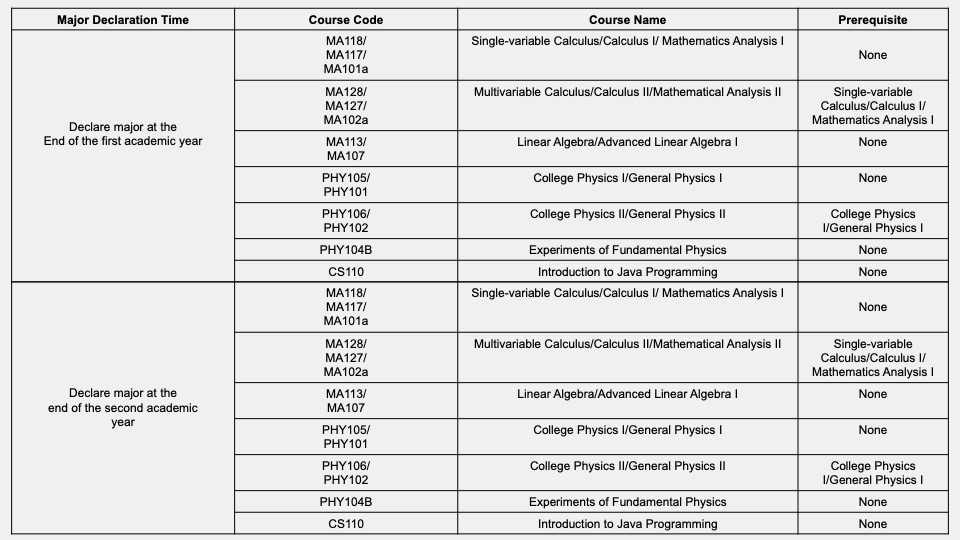

Table 1: Major Required Courses
Program of Industrial Design
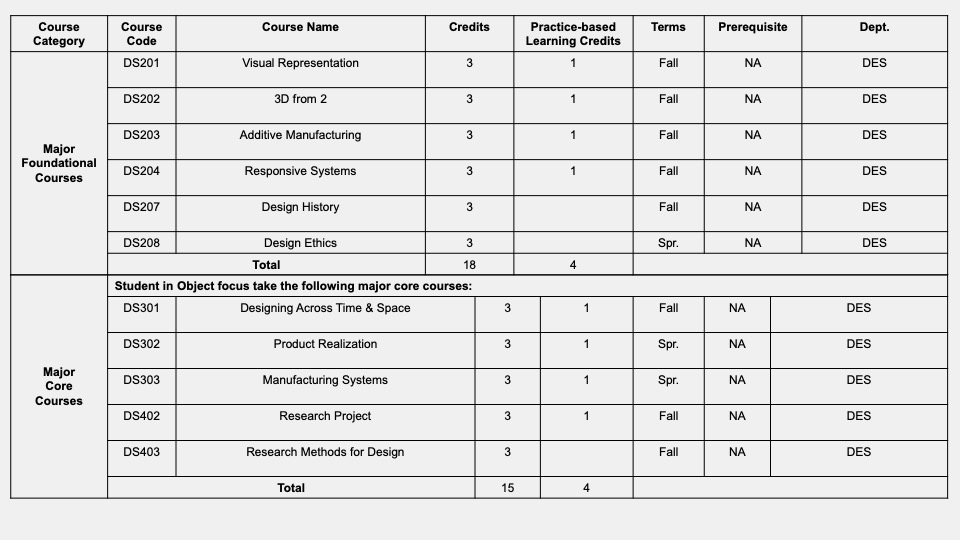

Table 2: Major Elective Courses
Program of Industrial Design
1. Major Common Elective Courses

2. Major Common Elective Courses
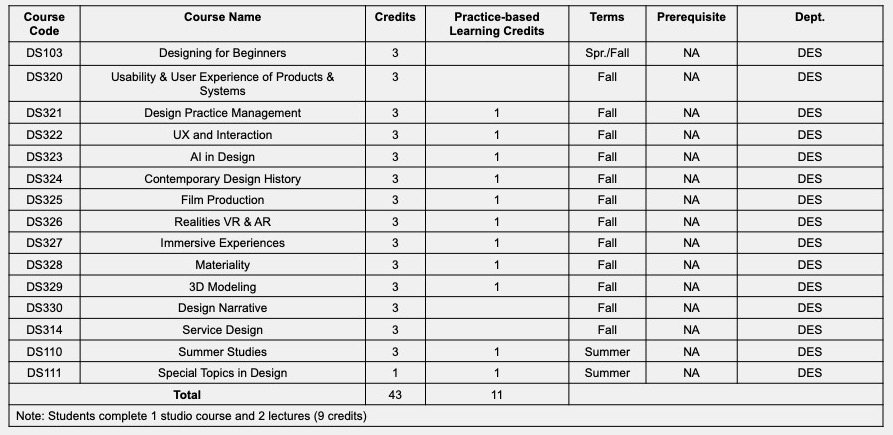
2. Major Focus Elective Courses

2. Major Focus Elective Courses
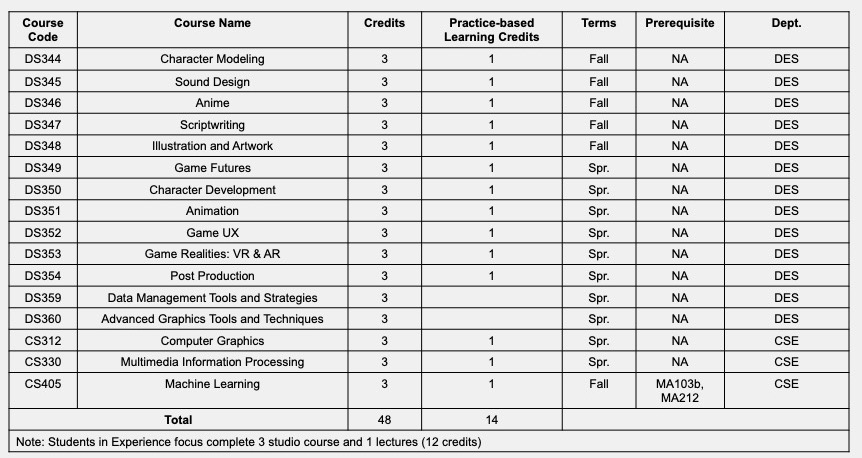
Table 3: Overview of Pratice-based Learning
Program of Industrial Design
